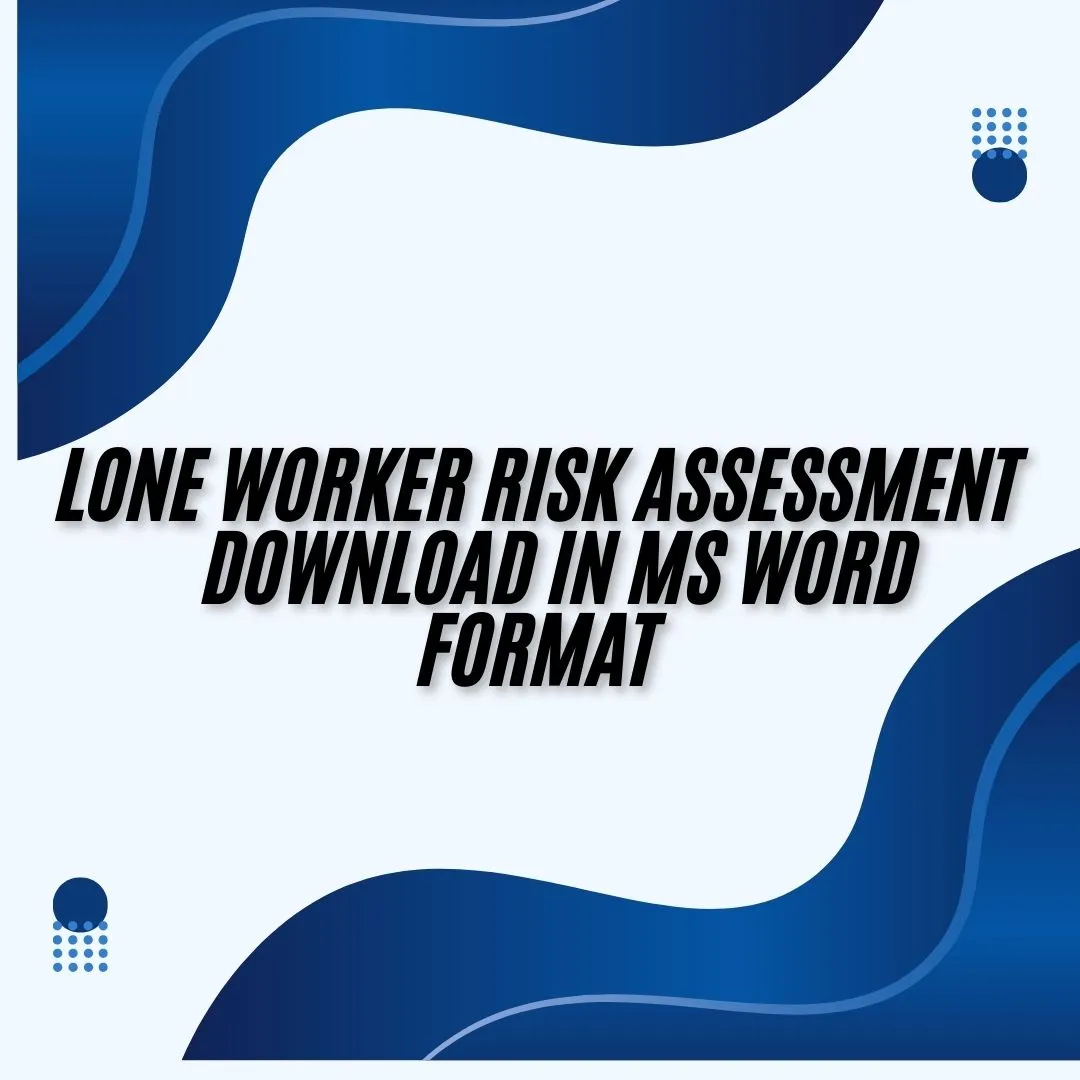A lone worker risk assessment is an organized review of possible dangers that a person working alone might encounter while doing their job. It aids in the identification of hazards and the use of control strategies guaranteeing their safety. Companies have to follow health and safety policies; hence, lone worker risk evaluations are crucial for legal compliance and employee welfare.
Why Lone worker risk assessment should be conducted?
- Spot workplace dangers.
- Lowering mishaps and injuries.
- Guaranteeing adherence to legal safety norms.
- Defending the company’s reputation.
- Raising staff output and confidence.
Important Actions in Performing a Lone Worker Risk Evaluation
- List lone workers. Find staff members who work alone or in remote locations.
- Analyze potential risks. Think through emotional, environmental, and physical hazards. Name risks including aggression, falls, slides, and equipment breakdowns.
- Assessment of Risk Levels. Calculate the degree and probability of found hazards.
- Apply preventive Measures. Make use of GPS monitoring and emergency alerts among other technologies. Provide unambiguous communication rules. Offer personal protective equipment (PPE) and safety courses.
- Monitor and evaluate. Change the risk assessment often. Motivational comments from single workers help enhance safety procedures.
What are the precautions for lone workers?
A lone worker calls for further precautions to reduce any hazards. Important safety measures are:
- Maintaining regular communication. Plan timed phone, radio, or mobile app check-ins. Track real-time whereabouts using GPS.
- Response Plan for Emergencies. Give lone workers emergency alarms or panic bells. Make sure they have emergency contacts and first aid equipment close at hand.
- Personal Protection Equipment (PPE). Give lone workers the required safety gear—helmets, gloves, and high-visibility apparel.
- Training and awareness. Organize frequent safety courses. Teach employees about emergency protocols and hazard identification.
- Automated safety systems. Make use of lone worker safety apps that set off alarms should inactivity or discomfort cause concern.
Download Template in MS Word
We have developed a free, editable Lone Worker Risk Assessment Template in MS Word to assist companies in simplifying their lone worker risk assessment. Sections for hazard identification, risk assessment, and preventative action abound on this form.
A major component of occupational health and safety is lone Worker Safety. By means of a lone worker risk evaluation, one guarantees compliance, lowers accidents, and advances a safe working environment. Businesses can proactively safeguard their lone employees by putting sensible policies into effect and applying our risk assessment form.
FAQs on Lone Worker Risk Management
- What is the purpose of a lone worker risk assessment?
- A lone worker risk assessment ensures that employees working alone are safe by identifying hazards and implementing control measures.
- How frequently should we conduct a lone worker risk assessment?
- We should review it annually or whenever significant changes occur in the workplace.
- What legal regulations apply to lone worker safety?
- Regulations such as the UK’s Health and Safety at Work Act and OSHA in the USA govern lone worker safety.

